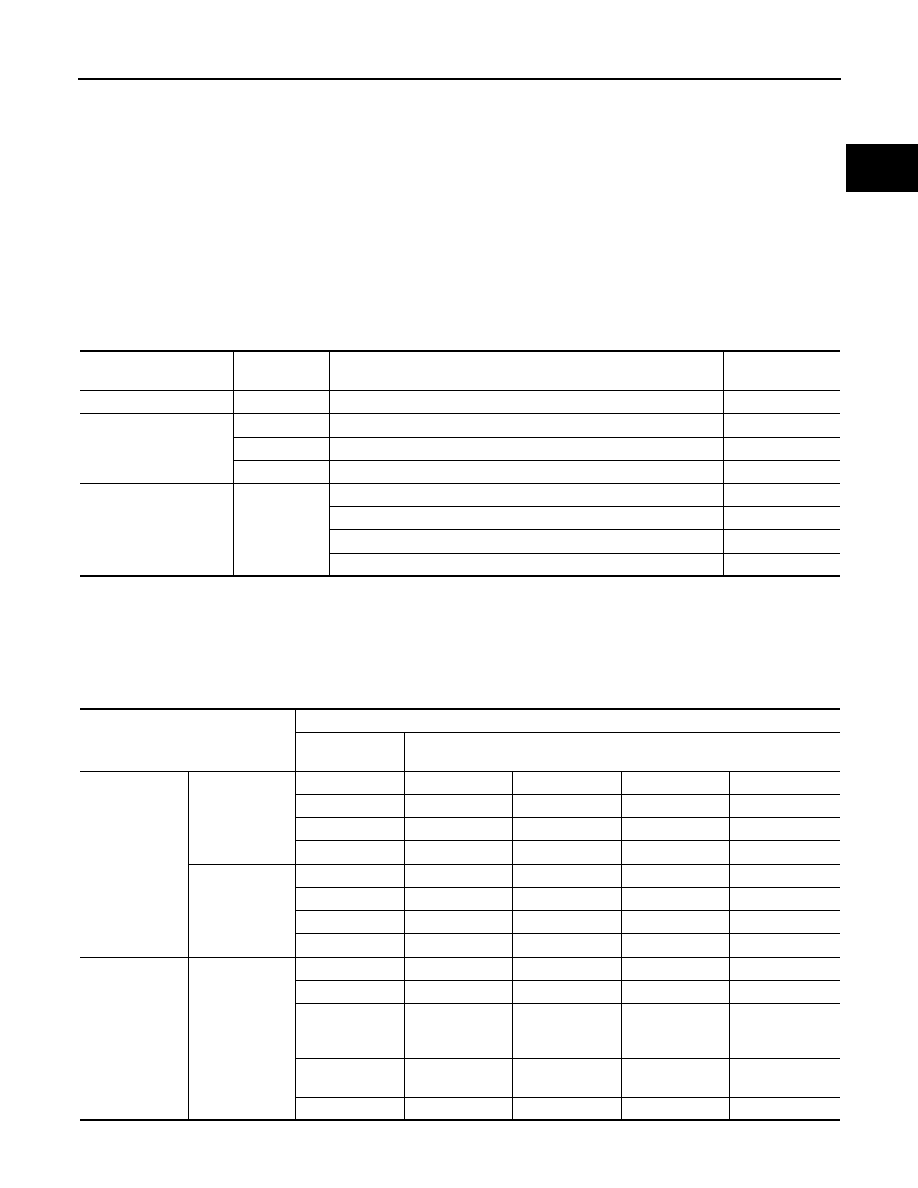Nissan Pathfinder (2008 year). Manual - part 351

ECM
EC-925
< ECU DIAGNOSIS >
[VK56DE]
C
D
E
F
G
H
I
J
K
L
M
A
EC
N
P
O
Occasionally, certain portions of the self-diagnostic test may not be completed as a result of the customer's
normal driving pattern; the SRT will indicate “INCMP” for these items.
NOTE:
The SRT will also indicate “INCMP” if the self-diagnosis memory is erased for any reason or if the ECM mem-
ory power supply is interrupted for several hours.
If, during the state emissions inspection, the SRT indicates “CMPLT” for all test items, the inspector will con-
tinue with the emissions test. However, if the SRT indicates “INCMP” for one or more of the SRT items the
vehicle is returned to the customer untested.
NOTE:
If MIL is ON during the state emissions inspection, the vehicle is also returned to the customer untested even
though the SRT indicates “CMPLT” for all test items. Therefore, it is important to check SRT (“CMPLT”) and
DTC (No DTCs) before the inspection.
SRT Item
The table below shows required self-diagnostic items to set the SRT to “CMPLT”.
*: If completion of several SRTs is required, perform driving patterns (DTC confirmation procedure), one by one based on the priority for
models with CONSULT-III.
SRT Set Timing
SRT is set as “CMPLT” after self-diagnosis has been performed one or more times. Completion of SRT is
done regardless of whether the result is OK or NG. The set timing is different between OK and NG results and
is shown in the table below.
OK: Self-diagnosis is carried out and the result is OK.
SRT item
(CONSULT-III indication)
Performance
Priority*
Required self-diagnostic items to set the SRT to “CMPLT”
Corresponding
DTC No.
CATALYST
2
Three way catalyst function
P0420, P0430
EVAP SYSTEM
2
EVAP control system purge flow monitoring
P0441
1
EVAP control system
P0442
2
EVAP control system
P0456
HO2S
2
Air fuel ratio (A/F) sensor 1
P0133, P0153
Heated oxygen sensor 2
P0137, P0157
Heated oxygen sensor 2
P0138, P0158
Heated oxygen sensor 2
P0139, P0159
Self-diagnosis result
Example
Diagnosis
Ignition cycle
←
ON
→
OFF
←
ON
→
OFF
←
ON
→
OFF
←
ON
→
All OK
Case 1
P0400
OK (1)
— (1)
OK (2)
— (2)
P0402
OK (1)
— (1)
— (1)
OK (2)
P1402
OK (1)
OK (2)
— (2)
— (2)
SRT of EGR
“CMPLT”
“CMPLT”
“CMPLT”
“CMPLT”
Case 2
P0400
OK (1)
— (1)
— (1)
— (1)
P0402
— (0)
— (0)
OK (1)
— (1)
P1402
OK (1)
OK (2)
— (2)
— (2)
SRT of EGR
“INCMP”
“INCMP”
“CMPLT”
“CMPLT”
NG exists
Case 3
P0400
OK
OK
—
—
P0402
—
—
—
—
P1402
NG
—
NG
NG
(Consecutive
NG)
(1st trip)
DTC
1st trip DTC
—
1st trip DTC
DTC
(= MIL ON)
SRT of EGR
“INCMP”
“INCMP”
“INCMP”
“CMPLT”